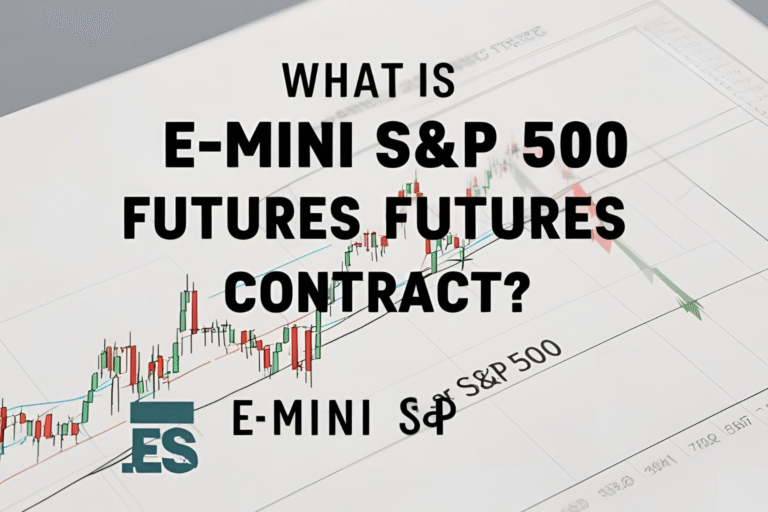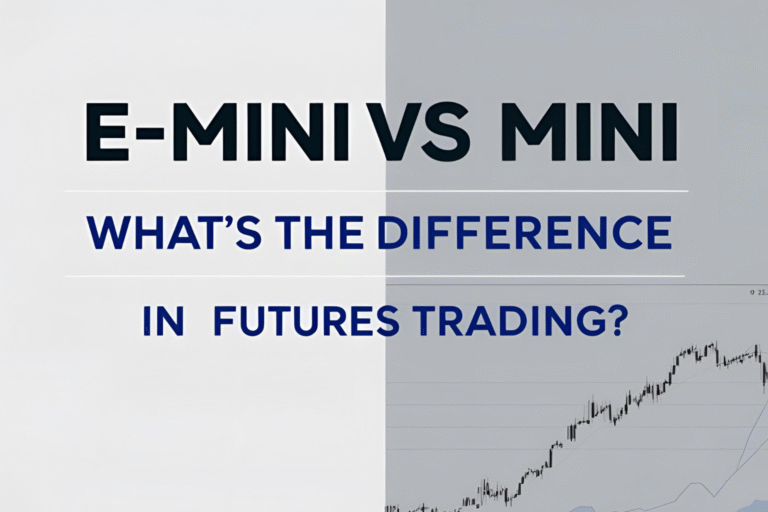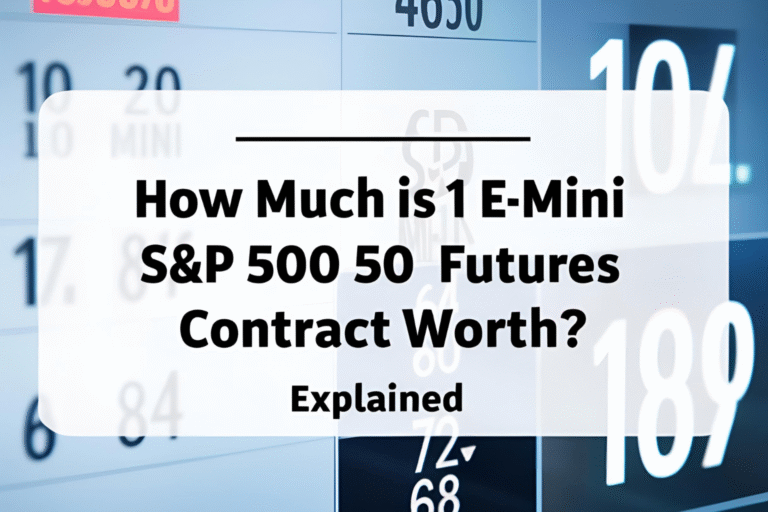What Is E-mini Trading? A Beginner’s Guide
If you’re interested in global financial markets and want to explore futures trading, chances are you’ve come across the term E-mini trading. But what exactly are E-mini contracts, and why are they so popular—especially among beginners and small account traders?
This guide will explain what E-mini trading is, how it works, and how Indian traders can legally access and benefit from it.
What Are E-mini Futures?
E-mini futures are smaller-sized futures contracts launched by the Chicago Mercantile Exchange (CME). They offer exposure to major financial indices, commodities, or currencies at a fraction of the size of standard futures.
The most traded contract is the E-mini S&P 500 (ES), which tracks the performance of the S&P 500 stock index.
Why Are They Called “E-mini”?
- E stands for electronically traded
- Mini refers to the contract being smaller than the full-size futures
For example, the full S&P 500 futures contract has a $250 multiplier, while the E-mini S&P 500 has a $50 multiplier. This makes it more accessible for retail traders.
Key Features of E-mini Contracts
- Traded on CME Globex (open nearly 24 hours/day)
- Highly liquid, with tight bid/ask spreads
- Standardized terms (lot size, tick size, expiration)
- Leveraged, allowing large exposure with limited capital
- Can be traded via online platforms under LRS rules from India
Common Types of E-mini Contracts
| Symbol | Index Tracked | Contract Size |
|---|---|---|
| ES | S&P 500 | $50 × Index Level |
| NQ | Nasdaq 100 | $20 × Index Level |
| YM | Dow Jones 30 | $5 × Index Level |
| RTY | Russell 2000 | $50 × Index Level |
All of these also have Micro E-mini versions, which are 1/10th the size.
How E-mini Trading Works
When you trade an E-mini contract, you’re speculating on the future direction of the index it represents. You can:
- Go long if you expect the index to rise
- Go short if you expect the index to fall
Your profit or loss is based on the point movement of the index multiplied by the contract size.
Example:
If you buy one ES contract at 4500 and sell at 4510:
- 10-point gain × $50 = $500 profit
Who Trades E-minis?
- Retail traders using small to medium-sized accounts
- Institutional investors hedging portfolios
- Day traders looking for intraday volatility
- Swing traders who hold positions over several days
Thanks to their liquidity and low barrier to entry, E-minis attract all types of market participants.
Can You Trade E-mini Futures from India?
Yes, Indian residents can legally trade E-mini futures via the Liberalized Remittance Scheme (LRS). Here’s how:
- Open an account with a global broker like Interactive Brokers
- Remit up to $250,000 per financial year under LRS
- Trade E-mini contracts via CME Globex
- Declare foreign income in your annual tax filings
Avoid unregulated or offshore brokers to stay compliant.
Pros of E-mini Trading
- High liquidity and low slippage
- Lower margin requirements than full-sized futures
- Almost 24-hour access to U.S. markets
- Ideal for both short-term and long-term trading strategies
- Available in Micro sizes for small capital traders
Risks to Keep in Mind
- Leverage increases both profit and loss potential
- Overnight risks from global news events
- Requires strict risk management and discipline
- Must track USD-INR conversion for Indian traders
- Real-time data may require a paid subscription
Getting Started with E-mini Trading (From India)
- Choose a LRS-compliant international broker
- Complete KYC and open a global trading account
- Fund via authorized Indian bank remittance
- Subscribe to CME market data if needed
- Start with paper trading or Micro E-mini contracts to build confidence
- Use platforms like TradingView, TWS, or NinjaTrader for charting and execution
Final Thoughts
E-mini trading offers a gateway into professional-level futures markets with manageable capital. Whether you’re looking to day trade, swing trade, or hedge long-term positions, E-mini contracts provide flexibility, precision, and global exposure.
Start small, focus on strategy, and grow with experience. With the right setup, Indian traders can trade U.S. futures legally and efficiently.
FAQs
Q1. What is the minimum capital required to trade E-mini futures?
For the ES contract, brokers require around $12,000. You can start with just $1,000–$2,000 using Micro E-mini (MES).
Q2. Is E-mini trading legal in India?
Yes, if done under RBI’s LRS route through authorized global brokers.
Q3. What is the difference between E-mini and Micro E-mini?
Micro E-mini contracts are 1/10th the size of E-mini contracts and ideal for beginners.
Q4. Can I hold E-mini positions overnight?
Yes, but you’ll need to meet the overnight margin requirements set by your broker.
Q5. Is E-mini trading good for beginners?
Yes, especially Micro E-minis, which allow learning with minimal capital and controlled risk.





